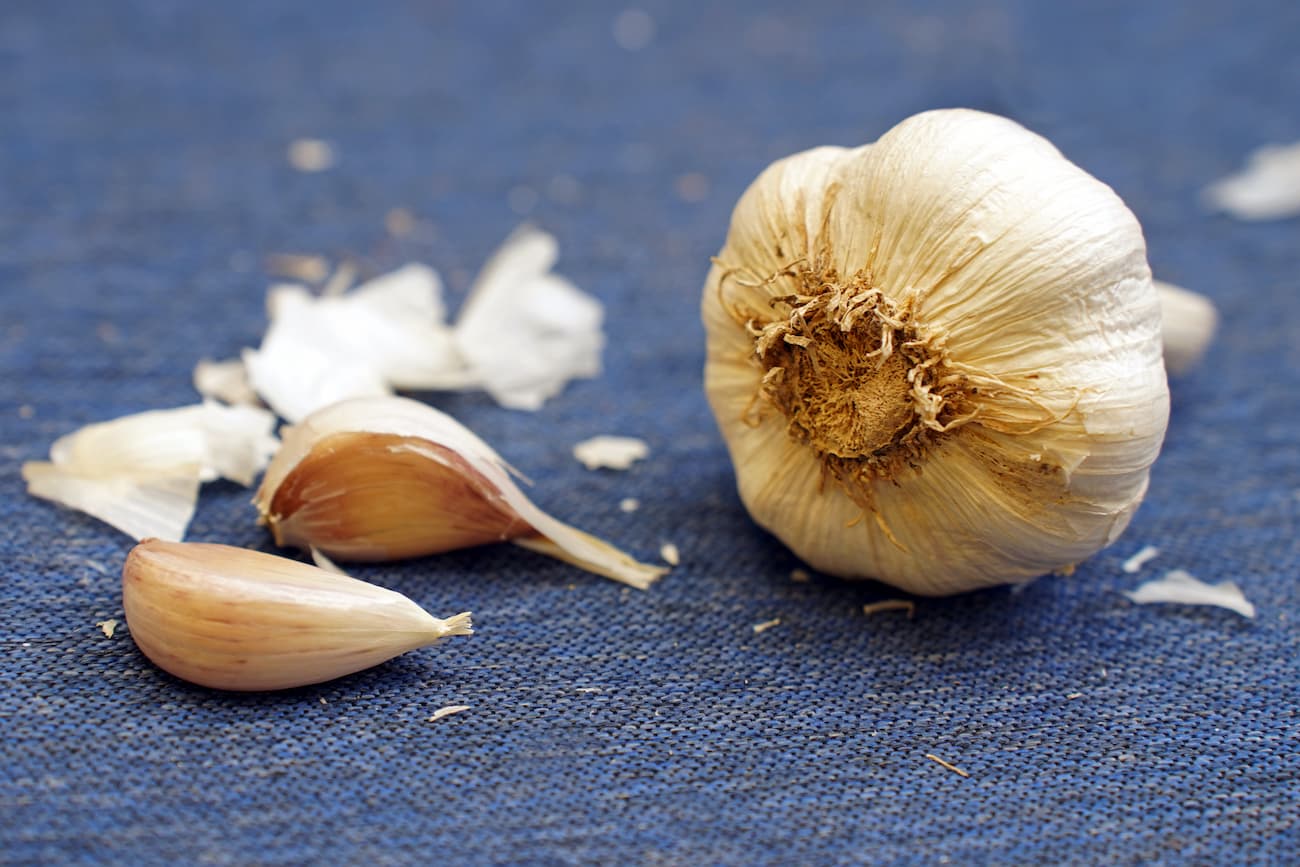Garlic Production in Missouri

Fact Sheet — Lincoln University Cooperative Extension
Author: Giuma Abusrewil, Ph.D., Extension Associate, Innovative Small Farmers Outreach Program (ISFOP)
900 Chestnut St, 202 Allen Hall, Jefferson City, MO 65101 • Office: (573) 681-5079
Reviewers: Safiullah Pathan, Ph.D.; Addissu Ayele, Ph.D.
Publication Code: ISFOP-FS-2(8-2025)
Introduction
Garlic ( Allium sativum L.) is part of the Amaryllis family, along with onions, leeks, chives, scallions, and shallots. It has a strong taste and smell due to its sulfur compounds, which also provide health benefits like fighting cancer, protecting the heart, lowering cholesterol, and reducing blood pressure.
The world produces about 30 million tons of garlic each year, with China leading at 23.3 million tons and India at 2.9 million tons. In the U.S., 24,000–26,000 acres of garlic produce 346 million pounds valued at $246 million, with California being the top producer. Gilroy, California, is known as the garlic capital of the world, producing 50% of the USA’s garlic. The U.S. also imports garlic from China, Spain, Mexico, Argentina, and Peru. In Europe, Spain is the largest garlic producer with 29,000 hectares producing 286,694 tons in 2022. Garlic likely arrived in North America with Polish, German, and Italian settlers around the 1700s.
Varieties
Garlic varieties can be categorized as softneck and hardneck. Both can be planted in Missouri.
Softneck varieties have tightly wrapped cloves that stay fresh for up to 9 months when stored properly. They mature faster and store better. Examples include Carpathian, Early Italian, Nootka Rose, Silver Rose, California Early, and California Late.
Hardneck garlic has fewer but larger cloves and includes over 200 varieties. Groups include Porcelain (≈4 cloves per bulb), Rocambole (≈12 cloves per bulb), and Purple Stripe. Hardneck varieties form scapes (stems from the bulb center), which should be removed in spring for larger bulbs. Examples include Music, German White, Violet Spring, Metechi, Spanish Roja, Georgian Crystal, Persian Star, Phillips, and Elephant Garlic.
Planting
Prepare the soil by enriching it with well-rotted manure or compost to help retain water and improve drainage. Fertilizing before planting promotes healthy roots and bulb growth in spring. Plant garlic in October or early November, 6–8 weeks before the ground freezes. Choose large, healthy cloves and plant them 2–4 inches deep and 3–6 inches apart. Plant larger bulbs, like elephant garlic, 4–6 inches deep and 12 inches apart.
Adding mulch helps protect the bulbs, conserve moisture, and prevent weeds. Use ~3 inches of clean straw in winter and early spring to stabilize soil temperature and conserve moisture. Remove the straw in spring to reduce disease and warm the soil for growth.
Companions: Plant with peppers, potatoes, tomatoes, carrots, cabbage, beets, chamomile, and spinach. Avoid beans, peas, parsley, and asparagus. Rotate crops every 3–4 years to help control pests and diseases.
Irrigation
Provide at least 0.5 inch of water per week during spring and summer until mid-June. Drip irrigation works best. If using a hose or sprinkler, stop watering 4–6 weeks before harvest to firm up bulbs and prevent rot.
Fertilization
Garlic needs extra nutrients. Apply water-soluble organic fertilizers such as chicken manure pellets, fish fertilizers, blood meal, and seaweed extract before planting. Forty-five to 60 days later, add potassium-rich fertilizer every six weeks.
Alternatively, in the fall, incorporate ~40 lb nitrogen with P 2O 5 (0–150 lb) and K 2O (0–150 lb) per acre (≈40 g N and 156 g each of potassium and phosphorus per 100 sq ft). Apply an additional 40 lb nitrogen as a side-dress in spring when shoots are ~6 inches high, and a final 40 lb dose 3–4 weeks later to foster root development and maximize bulb growth.
Harvesting
Harvest when the lower third of leaves turn yellow/brown and dry. Loosen soil with a garden fork 6–8 inches from the plant and lift the bulb; avoid pulling by the leaves to prevent breakage. Harvesting too early yields small cloves that store poorly; too late and cloves may burst from skins, leading to mold, dehydration, and shorter storage life.
Curing
Cure in a dry, shady place for 2–3 weeks. Tie bulbs in bundles of 5–10 and hang with bulbs facing down to ensure airflow. Curing is complete when outer skins are dry and crispy, the neck is constricted, and the center of the cut stem is hard. After curing, clean roots and trim leaves to ~1 inch above the bulb, removing only the dirtiest outer wrapper leaves. Avoid washing to retain moisture and oils.
Storing
Store bulbs in a cool, dry, well-ventilated area, ideally in mesh bags or loosely woven baskets at 60–65°F in dim light. Softneck garlic can be stored at 32°F for 8–9 months; hardneck can be stored at room temperature for up to 7 months. Avoid typical room-temperature storage for hardneck long-term, as it may dry out, sprout, or soften within 2–4 months.
Pests
The most common pest is the onion thrip. Maintain a drier environment and use sticky traps to deter their presence.
Diseases
White rot fungus causes leaves to yellow, wilt, and die. Prevent by using certified disease-free seed.
Garlic bloat nematode ( Ditylenchus dispaci) spreads easily between farms. Obtain seed from reputable growers with negative garlic bloat (NGB) nematode-free stock. Avoid planting near Allium crops (onion, leek, chives, shallot) as well as parsley, celery, and certain weeds for 3–4 years, and rotate crops. Seeds can be surface-sterilized using a 10% commercial bleach solution (1 part bleach to 9 parts water) or an oxidate dip (32 oz per 25 gallons water), followed by immediate planting.
References
- https://U of Mass.edu/vegetable factsheet/garlic-harvest-curing-storage
- https://almanac.com>planting-garlic-Fall
- https://almanac.com/plant /garlic
- https://Christopher Ranch.com>garlic-harvest
- https://comogardens.or
- https://dragonflyhillfarm and kitchen.com>the best garlic
- https://enwikimedia.org>wiki>garlic>list of countries
- https://extension.missouri.edu>news>garlic
- https://www.freshplaza.com>Europe>article-spain-garlic
- https://fruitguys.com
- https://fultonsun.com>news>garlic
- https://garlic+how+much+Spain+produced+each+year
- https://garlic+varieties+by+keene+garlic
- https://www.hmongfarmers.com>garlic
- https://homesteadignfamily.com.how-to-plant-garlic
- https://homeandgardens.com/when to fertilize garlic
- https://journals.ash.org>view>garlic
- https://keenorganics.com>garlic varieties
- https://myplanting.com>blog>garliccompanion
- https://visit Gilroy. Com>garlic
- https://unsplash.com/s/photo/garlic
- https://news.missouristate.edu>garlic-Research
- https://postharvestucdavies>edu>files>garlic
- https://www.thespruce.com>vegetable,garlic
- https://thespruce.com/harvesting garlic
- https://www.garden tech.com>blog
- https://youtube.com>watch>garlic
- mwveguide.org/onion and related -crops ????
- https://specialty produce.com>keeper-garlic
- how to plant, grow and harvest garlic by Jolene Hansen
- https://www.ca farm trust.org>garlic-lover-unite
- https://www.ars.usda.gov
- Top 6 benefits of eating a clove of garlic before bed by Shikita
- www. Gardening know how.com>edible herbs>garlic
- https://www.great.com>post>11 mistakes
- https://today Oregon state. Edu>news>get your garlic
- https://www.stark bros.com>how to grow garlic
- gardenmythis.com>blog>garlic
- https://extension Minnesota.edu>vegetable>growing garlic
Lincoln University of Missouri and the U.S. Department of Agriculture cooperating. Publications are distributed without regard to race, color, national origin, sex, age, religion, or disability. Lincoln University is an equal opportunity provider and employer.
